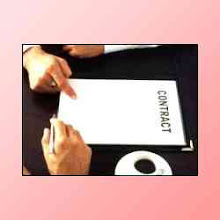Exporters of Dried Seafood Products
Wholesale Suppliers of Dried Seafood Products | Agents for Dried Seafood Products
Exporters of Dried Seafood Products Siam Canadian Foods Co. Ltd SEA-EX MEMBER THAILAND - Frozen Seafood (Shrimp, Cephalopods, Fish and Value Added products) Alaska Pollock, Bream, Catfish, Clam, Cockle, Cod, Conger Eel, Crab, Crab Claws, Crawfish, Cuttlefish, Eel, Flounder, Baby Clam, Grouper, Haddock, Hake Halibut, Hoki, Horse Mackerel, Kingfish, Lobster, Lobster Tail, Mackerel, Mahi mahi, Marlin, Milkfish, Monkfish, Mullet, Mussel, Mussels - blue and green shell, Nile Perch, Ocean perch, Octopus, Oilfish, Oyster, Pangasius (Basa), Parrot Fish, Perch, Pollock, Saithe, Pomfret, Porgy, Prawn, Rainbow Trout, Redfish, Ribbonfish, Rock Lobster, Salmon, Salmon Roe, Salmon trout, Salmon Atlantick, Salmon Pacific, Salted dried fish, Sardine,Scallop, Scampi, Surimi, Surimi-base, Swordfish, Tilapia, Shark, Shell, Shrimp, Shrimp warm water, Slipper lobster tails, Snapper, Sole, Squid , Trevally, Trout, Tuna, Tuna albacore, Tuna bigeye, Tuna bluefin, Tuna bonito, Tuna yellow, Whiting, Sushi, Brramundi, Pangasius, Yellow Fin Sole, Cod, Redfish, Japanese Flying Squid, Bartrami Squid, Red Mullet, Red Snapper, Vannamei White Shrimp, Black Tiger Shrimp, Cephalopods, Cuttlefish, Gian Octopus, Baby Octopus, Seawater & Freshwater Shrimp, Shell Fish, Crab, Frog Legs, Pasteurized Crab Meat, Seafood Mix, Rohu, Hilsa, Mrigal, Boal, Ayer, Catla, Red Porgy, Indian Mackerel, Hake, Illex Squid, Croaker, Scomber Mackerel. Duy Dai Co. SEA-EX MEMBER VIETNAM - - Duy Dai has been known as one of the most reliable suppliers of Basa, Pangasius fish and other fishery products including black tiger shrimp, octopus and squid of “clean quality”. The Company has been developing closed and long-lasting cooperation relationship with many importers and distributors global-wide. Overseas Seafoods Ltd SEA-EX MEMBER BANGLADESH - We are Processors, Exporters, Importers, Wholesalers, Retailers and agents of seafood since 1990. Our products include live seafood such as live yellow eels, live mud crabs, chilled seafood, dried shark fins, fish maws, dried shrimps, dried fish, all types of black tiger shrimps, freshwater shrimps, white, pink and cat tiger shrimps, hilsha fish, silver pomfret, black pomfret, yellow croaker, cuttlefish, tongue sole, conger eels, kati fish, ribbonfish, red snapper, Indian mackerel, spanish mackerel, freshwater fish such as rohu, ayre, boal, pabda, tengra, mrigal, katal,pangush, puti, koi, tilapia, carfu, tilapia fillet and basa fillet in IQF... Jagalchi Korea Corp SEA-EX MEMBER SOUTH KOREA - Export, import and international trade, seafood inspection agency for all kinds of seafood. Frozen Seafood (Shrimp, Cephalopods, Fish and Value Added products) Salted dried fish, Sardine, Scallop, Scampi, Surimi, Surimi-base, Swordfish, Tilapia, Shark, Shell, Shrimp, Shrimp warm water, Slipper lobster tails, Snapper, Sole, Squid , Trevally, Trout, Tuna, Tuna albacore, Tuna bigeye, Tuna bluefin, Tuna bonito, Tuna yellow, Whiting, Sushi, Brramundi, Pangasius, Yellow Fin Sole, Cod, Redfish, Japanese Flying Squid, Bartrami Squid, Red Mullet, Red Snapper, Vannamei White Shrimp, Black Tiger Shrimp, Cephalopods Ha Giang Seafood Private SEA-EX MEMBER VIETNAM - Business processing and exporting frozen and dried Seafoods, Meat and Agriculturals include: Shrimps, Lobster, Cuttlefish, Octopus, Poulp Squid, Squid, Stingray wings, Yellowstriper, Layang Scad, Leather Jacket, Anchovy, Medium Pig, Suckling Pig, Vietnam long grain white Rice, Starch wheat flour, Corn Erez Seafood SEA-EX MEMBER VIETNAM - Export Pangasius Hypophthalmus, Black Tiger shrimp, White shrimp, Squid, Cuttlefish, Octopus, Scallop, Pelagic fishes, Tuna (loin, steak/portion), Dried Fish and other sea products Shabina Exports SEA-EX MEMBER INDIA - We process and export dry fish and a wide range of frozen fishes like Ribbonfish, Croaker, squid, cuttlefish, pomfrets, tuna, TTC, Ghol, BMC, Snapper, Sea bream, king fish, leather jacket HGT, Katti, sole fish, Hilsa, black & chinese pomfrets, seer fish, Indian mackerel and so many varieties. Duy Dai Co. Ltd SEA-EX MEMBER VIETNAM - - Duy Dai has been known as one of the most reliable suppliers of Basa, Pangasius fish and other fishery products including black tiger shrimp, octopus and squid of “clean quality”. The Company has been developing closed and long-lasting cooperation relationship with many importers and distributors global-wide. Borneo Seafoods SEA-EX MEMBER MALAYSIA - We are the processor, exporter and wholesaler of fresh and frozen Borneo seafoods from Malaysia. Our products are blue swimming crab, life mud crab, tiger prawn, sea white shrimp, banana shrimp, flower shrimp, lobsters, snapper, grouper, mackeral, sardines, silver & black pompret, yellow fin tuna, butter fish, cattlefish, squid, dried and salted fish, dried anchovy, dried shrimp, seaweeds and other Borneo sea products |
Source






{ 1 comment… read it belo